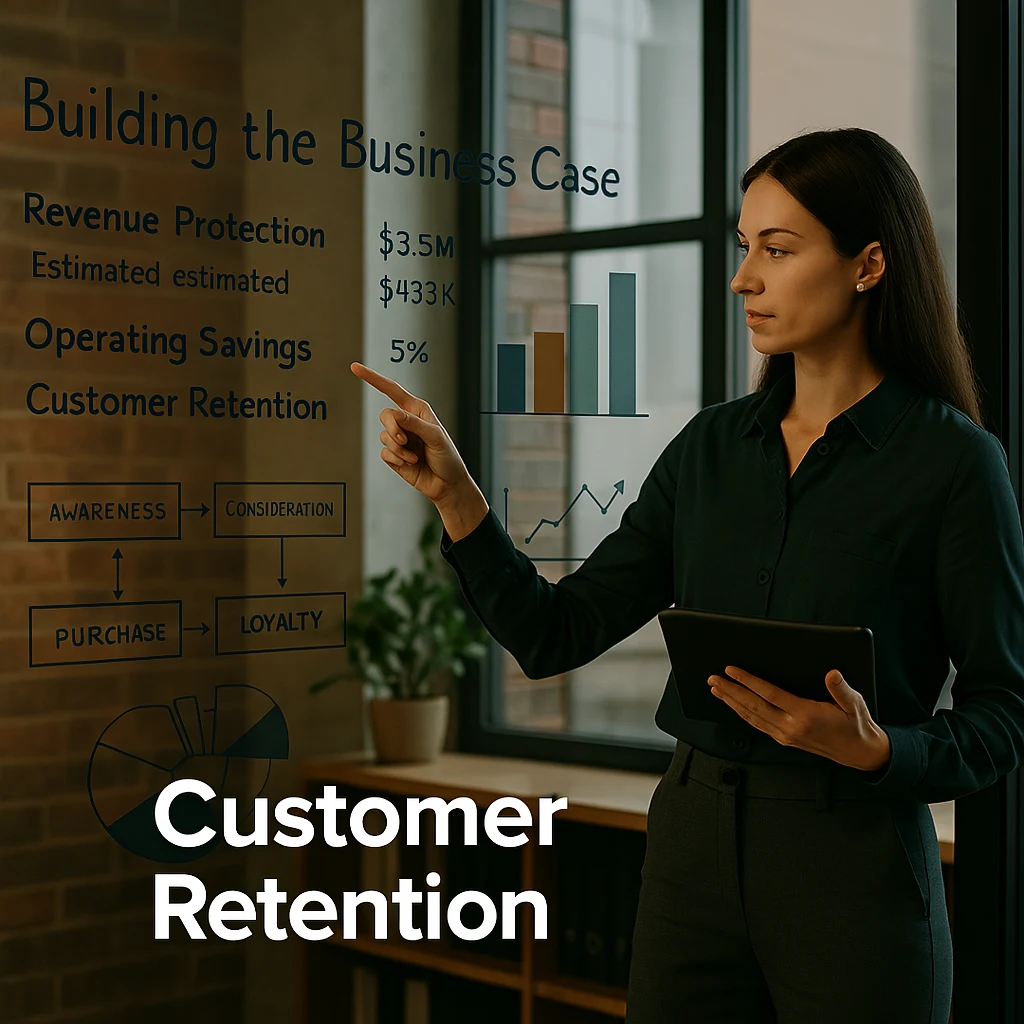Implementation Strategy
In a cost-conscious environment, securing budget for a new team required compelling ROI projections and meticulous planning.
Building the Business Case
Securing resources for a new team in our cost-conscious environment required a compelling business case with clear ROI projections. I developed a comprehensive analysis that quantified:
- Revenue Protection — Calculated the lifetime value of customers we were losing in the first 90 days and projected retention improvements based on a detailed analysis of 8,479 accounts with Customer Success support versus 13,503 accounts without it.
- Operational Savings — Estimated reductions in support calls (25% reduction in call volume), activation failures (25% reduction), and billing disputes (50% reduction in promo correction requests).
- Sales Productivity Gains — Quantified the selling time that would be recaptured by relieving reps of post-sale administrative work, showing the CS team could save approximately 2,040 hours per month, equating to $2M in annual SAM payroll.
- Customer Experience Improvements — Projected NPS increases and their downstream impact on referral business, with our pilot achieving a perfect 5/5 rating on all customer surveys.
With this analysis in hand, I presented to senior leadership and secured approval for a pilot program with a team structured around geographic support ratios of 1.75 Customer Success Reps for every Mid-Market Director, with a total of 30 CSRs (4 Senior Managers/1 AD) at full scale.

Team Structure and Objectives
With approval secured, I focused on building a team with clear objectives centered around three core pillars:
Reduce friction and free up rep time through reduced non-sales activities, process improvements, and support that enabled reps to focus on selling.
Identify additional opportunities through engagement, with focus on new logo growth, reduced churn, fewer customer service calls, and reduced billing errors.
Drive digital adoption of MyBiz portal, improve NPS scores, generate referrals, and provide a feedback loop to address systemic issues across the organization.
Job Responsibilities Overview
The Customer Success Team was designed with specific responsibilities across multiple service areas, including:
- New Customer Onboarding - Onboard new logos (15+ per CSR), manage existing customer ports (15+), handle One Talk (5+), FWA (5+), and mmW (1+) activations
- Engagement Flow - Manage communication through SFDC with a defined escalation process
- Structured Timeline - Follow the 5-stage journey map from 0-1 day post-sale through 35-40 days with ongoing support as needed
Training was intensive and immersive. Team members shadowed top sales reps to understand the selling process, spent time with technical support to build product knowledge, and received specialized training on identifying at-risk behaviors. The goal was to create a team that could serve as knowledgeable guides through the critical early customer journey.
Most importantly, we established a robust feedback system. Every interaction was documented in our CRM, and weekly team meetings included a structured review of emerging patterns. This allowed us to quickly identify and address systemic issues rather than simply treating symptoms.